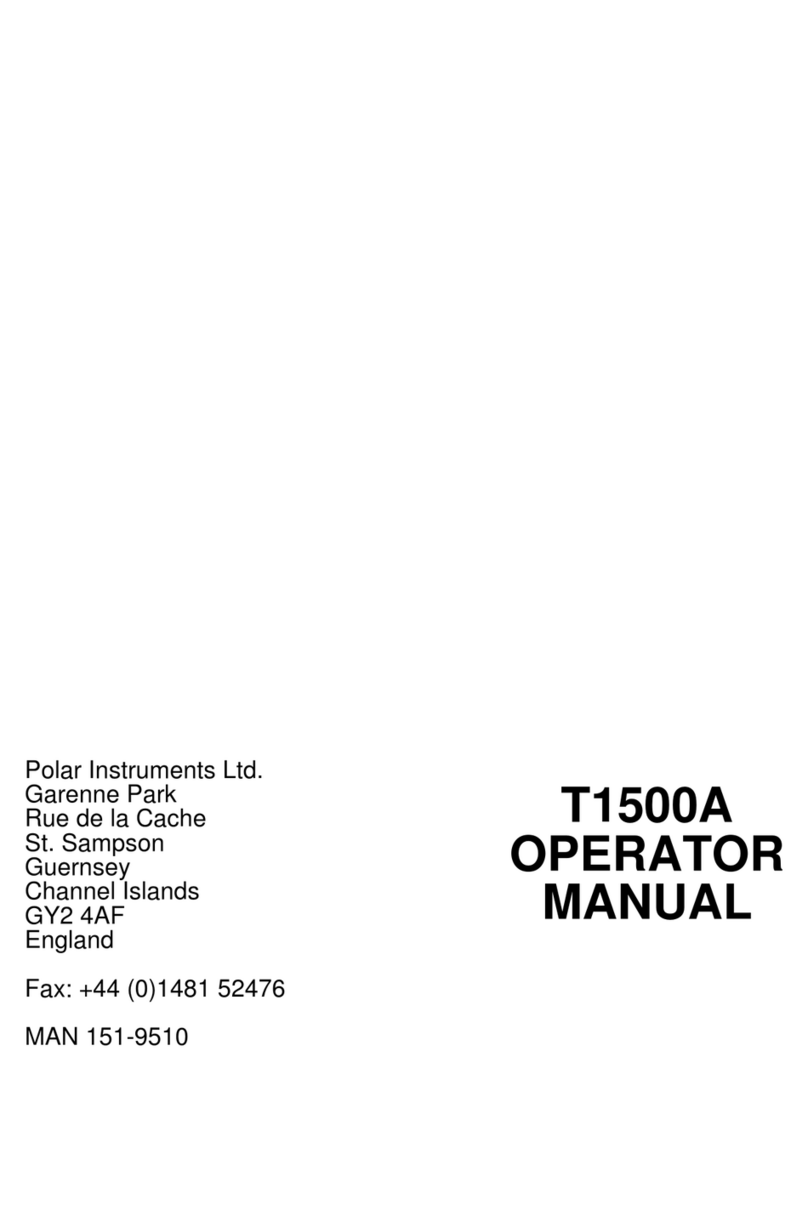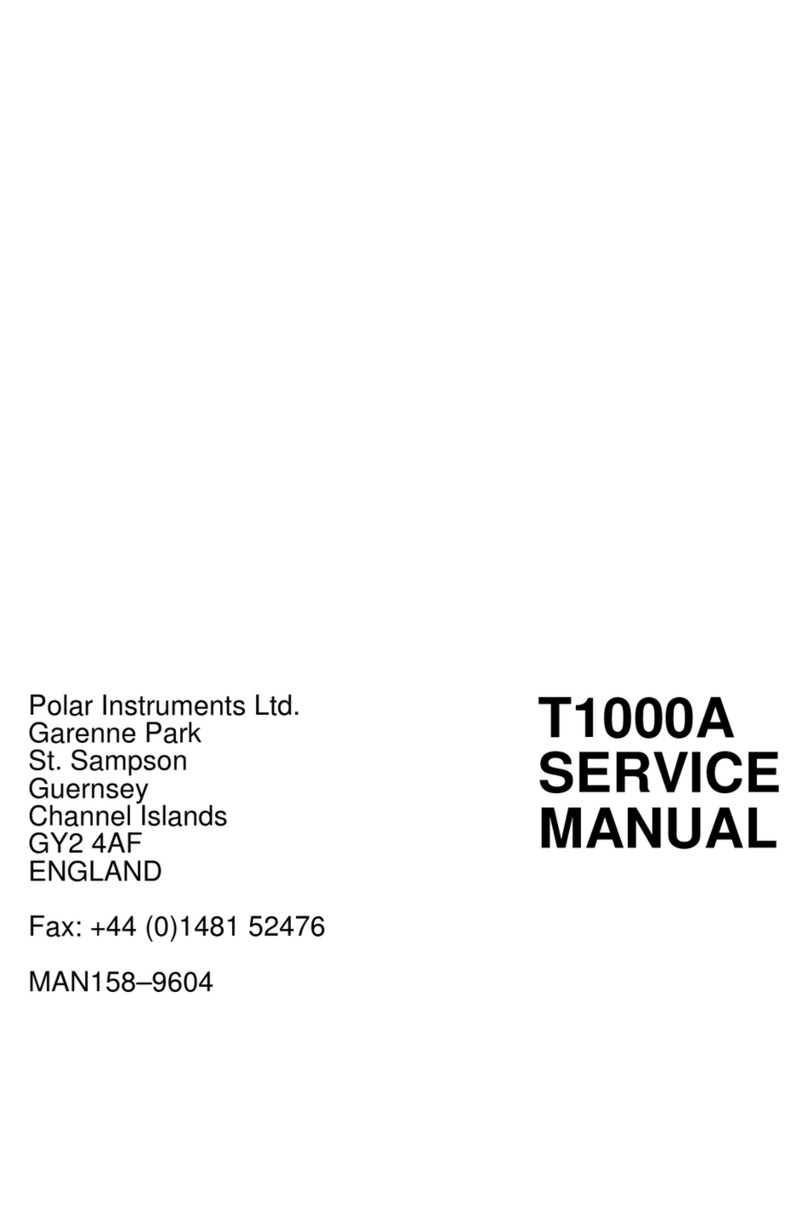
T1500A SERVICE MANUAL
vi
CONTENTS
DECLARATIONS............................................................................................................. i
ELECTROMAGNETIC COMPATIBILITY.......................................................................i
European Community Directive Conformance Statement..........................................i
SAFETY..........................................................................................................................ii
WARNING....................................................................................................................ii
GROUNDING ...............................................................................................................ii
POWER SUPPLY.........................................................................................................ii
OPERATION................................................................................................................iii
CAUTION.....................................................................................................................iii
Electrical Isolation.....................................................................................................iii
Static Sensitive Devices ...........................................................................................iii
SPECIFICATIONS..........................................................................................................iv
ENVIRONMENTAL OPERATING CONDITIONS ........................................................iv
Fuses........................................................................................................................iv
Channel A and B Output Fuses................................................................................iv
Physical characteristics (excluding accessories).......................................................v
SYMBOLS ....................................................................................................................v
ACCESSORIES............................................................................................................v
Standard Accessories................................................................................................v
SECTION 1 – PERFORMANCE CHECK .................................................................... 1-1
MAINTENANCE AND CALIBRATION OF INSTRUMENTS ..................................... 1-1
Performance Check............................................................................................... 1-1
Adjustment Procedure........................................................................................... 1-1
Recommendations for Routine Maintenance ........................................................1-1
PERFORMANCE CHECK ........................................................................................ 1-2
Procedure.............................................................................................................. 1-2
SECTION 2 – CALIBRATION...................................................................................... 2-1
CALIBRATION PROCEDURE.................................................................................. 2-1
Equipment required............................................................................................... 2-1
Calibration procedure............................................................................................ 2-1
SECTION 3 – CIRCUIT DESCRIPTION......................................................................3-1
T1500A CIRCUIT DESCRIPTION............................................................................3-1
Sine generator....................................................................................................... 3-1
Sine drivers............................................................................................................ 3-1
Switching...............................................................................................................3-2
Amplifier ................................................................................................................ 3-3






























